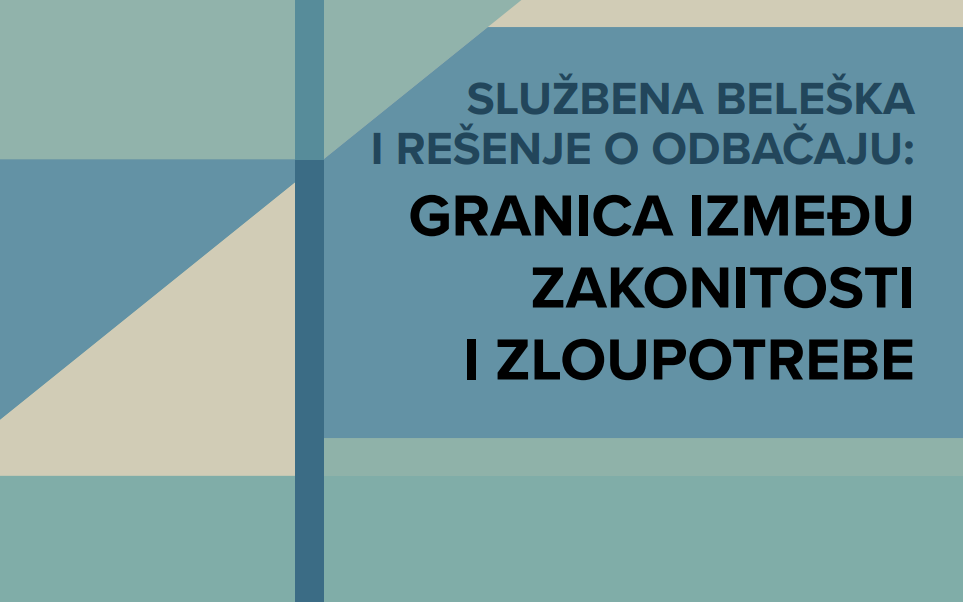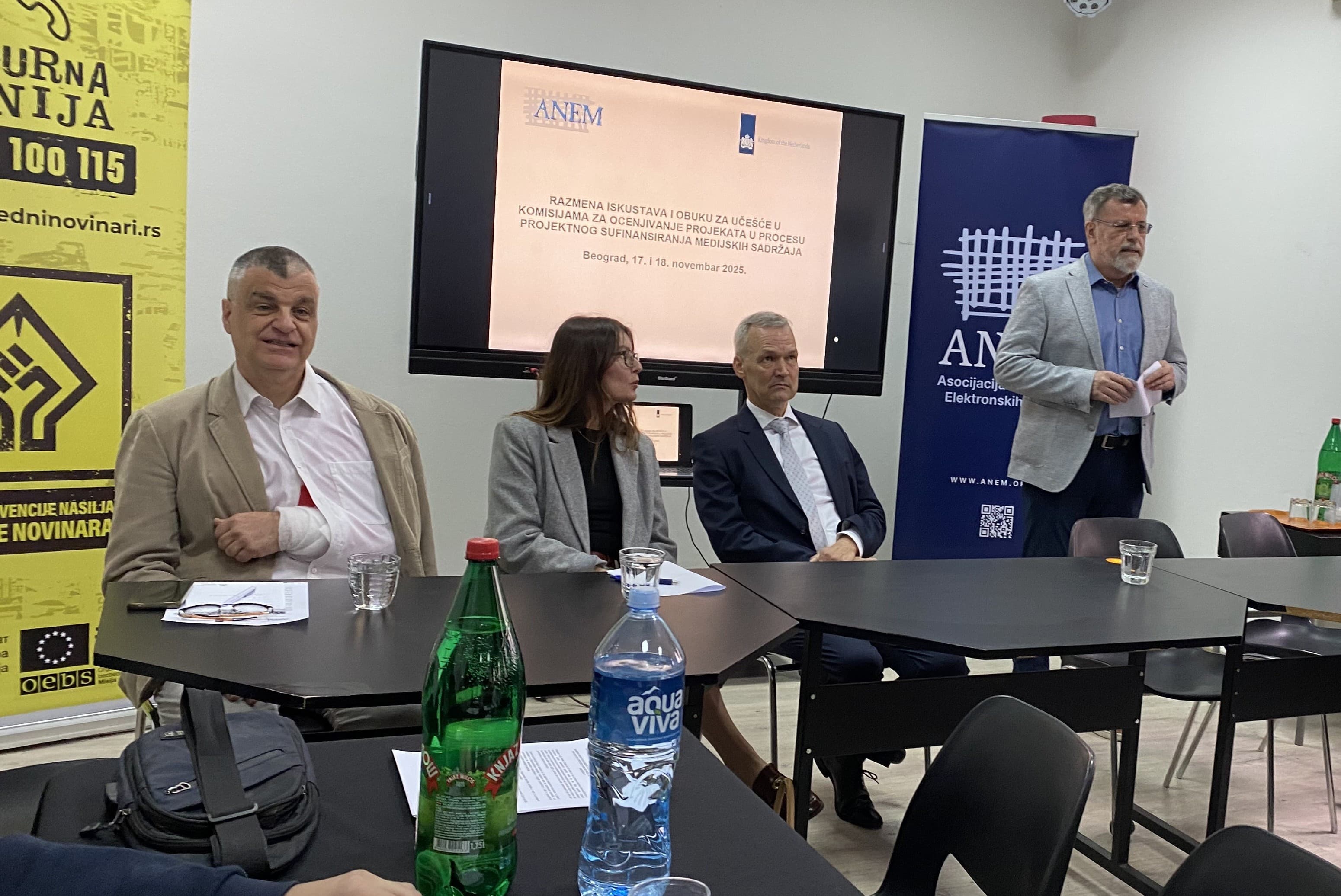The police jeopardize the safety of female journalist from the youth portal Zoomer
It is unacceptable for the police to prevent journalists from recording them while intervening against citizens in public spaces. Reporting from protests and documenting the actions of citizens and police forces are in the public interest. Clearly marked journalists on assignment must have the status of official representatives, emphasize the editorial team of Zoomer following a series of attacks on their female journalists.

Stones, fireworks, firecrackers, rockets, the police's hand and word – these are all the means by which female journalists from the youth portal Zoomer were injured while reporting on protests across Serbia, particularly during those in Novi Sad and Belgrade last week. Their journalistic credentials did not help them with the police, and members of the ruling party attacked them precisely because they were journalists.
Zoomer has informed the public about all the threats, attacks, and pressures they face, emphasizing that it is unacceptable for the police to jeopardize the safety and reporting rights of female journalists from this portal.
Regarding all these attacks, journalists from Zoomer, Teodora Šulj and Marina Nenadović, along with the editor-in-chief Nemanja Marinović, spoke to Cenzolovka.
A police officer hits me while I identify myself as a journalist
Teodora Šulj states that the most difficult moment for her was on August 15 in Kneza Miloša Street in Belgrade, when, after a barrage of pyrotechnics was directed at the demonstrators, a group of SNS supporters decided to turn towards the journalists and charge at them.
“Their charge was preceded by the sentence Now film the f***ing journalists. At that moment, I truly felt real helplessness. The police had already started moving against the demonstrators, and for us journalists who were there, there was nothing left but to rely on our own bodies to escape. It seemed they just wanted to intimidate us; as far as I know, none of my colleagues were injured,” she explains.
“I reported on August 13 from the city center. At that time, the column of demonstrators reached the cordon in front of the National Assembly. Later, when the police were suppressing the demonstrators near the Idea stores by London, I was with a colleague from another media outlet and saw a police officer throw a man onto the asphalt, hit him with a baton, and then kick him. This all happened as the police were pushing back the citizens. The two of us moved a bit closer to film what was happening to that man. After a few seconds, a police officer approached us saying: ‘What are you filming?!’ At the moment when I told him that I was a journalist, even though I was visibly wearing a vest and had an accreditation that stated I was a journalist, the officer hit me on the arm where I was holding my phone. When I asked him why he hit me and repeated that I was a journalist, while my colleague told him to calm down, he left. The incident has been reported to NUNS.”
“It is absolutely unacceptable for members of the police force to prevent female journalists from filming and photographing police interventions against citizens taking place in public spaces. We reiterate that reporting from protests and documenting the actions of both citizens and police forces is in the public interest, and that clearly marked journalists on assignment must have the status of official persons,” the Zoomer editorial team emphasized on this occasion.
Marina Nenadović was injured while reporting from Novi Sad.
“During the protest in Novi Sad, on Stražilovska Street, in front of the Serbian Progressive Party headquarters, I was hit in the shoulder by a stone thrown by unknown individuals from that direction. Fireworks were also fired multiple times, and one rocket slightly burned me,” Nenadović stated. This was done by individuals from the SNS premises, in front of the police, which did not react,” Zoomer announced.
The police later used force against her, even though she stated that she was a journalist on assignment:
“At the moment when the police were pushing back the citizens, one of the police officers grabbed my arm and shoved me, even though I was wearing a press vest and had my credentials,” Nenadović notes.
POLICE RAIDED THE EDITORIAL OFFICE TO ARREST A JOURNALIST“We will never forget the day when our journalist Darko Gligorijević was taken by the police from the editorial office and arrested – because he was doing his job and filmed an attack in the Students' City. These situations have only one goal – to intimidate journalists and create a new normal in which any form of targeting journalists is permissible. And that is something we keep in mind every time we go out into the field,” says Zoomer editor Nemanja Marinović. |
At the same time, while the journalists were reporting from the protests, a threat arrived in the inbox of the portal's Instagram account from a fake profile, stating that they should all be hanged precisely because they were reporting from the protests.
“Is it pressure when journalists are arrested, or when the police prevent female journalists from reporting, pushing them and applying force? When messages arrive in DM (direct messages) that we should be hanged for reporting? When we know that similar threats have reached some big names in journalism before us, in similar social circumstances – which did not end well? Of course, there have been pressures and threats, but every editorial office that reports professionally receives them – directly or indirectly. Whether it’s a threat in DM, a rabbit at the editorial office's address, posters stuck around the city, slashed tires on cars, chanting at a game… All of that, directed at any professional journalist, is directed at all of us,” concludes Marinović.
It’s human to be afraid
Is there fear when heading to a protest and how does one cope with it?
Teodora: “Fear is present, but I think it's healthy; it’s human to be afraid. We haven't seen this much violence in the streets of Serbia in a long time. We must not become desensitized to these events, because otherwise we will find ourselves in a situation where we normalize them. Moreover, a healthy dose of fear is important for our personal survival (…) We always joke that since the threats began and Darko's arrest happened, we know we are doing the right thing. I simply think that such things sometimes motivate us to continue with our work.”
Marina: “Every protest prompted by the beating of some students, being hit by cars, and similar incidents has been very difficult. People are emotional; often their families and friends are present, and there is an atmosphere of helplessness among all who have come. Last week, while reporting, I saw how they were taking an injured boy out of first aid. His entire head was bandaged and bloody. At that moment, we didn’t even know what had happened to him. Fear for myself sometimes arises, but I am always worried for my colleagues. I have no problem reporting from a field that is not the safest, however, it is always very important to me that all my colleagues check in that they are okay.”
Nemanja: “Journalism is a high-risk profession, and that is something we all accepted. We simply go – and do our job to the best of our abilities in that moment. But, of course, it’s important that adrenaline doesn’t override reason, that we assess the situation, our capacities and risks rationally, and that we support each other.”
Solidarity with other colleagues from friendly media can help the desire for truth overcome fear. The female journalists from Zoomer emphasize that although they usually go out into the field alone – they are never truly alone. They can always join other colleagues and thus protect each other.
“That solidarity has proven to be very important since the protests began, and the awareness among journalists that in the field we are not competitors – but that we work together to ensure that we are all safe while reporting with the same goal – in the public interest. Of course, the phone number of a lawyer, constant communication with the entire team and with me as the editor wherever any of us may be at that moment, along with journalistic and NUNS credentials and digital data protection are a given,” explains Marinović.
But how do you manage to report professionally despite all of this?
Nemanja: “Professional reporting is very simple – know the Journalist Code of Serbia and always act in accordance with it in every situation. Whether we manage to report professionally is a debatable question for all professional media. Whether we manage to be up to the task and act professionally in every situation – I think we do. But whether we manage to report professionally – no, because those who are currently obstructing us are stronger and are doing everything in their power to prevent the truth about what is really happening from reaching the public.”
And now helmets!
As a small editorial team of just five people, the first major field assignment was in Novi Sad at the protest in front of the City Hall. They admit that they did not know what to expect and simply ceased reporting.
“At that time, we developed safety measures and procedures and acquired equipment – and now we are updating it again because it turned out that we also needed helmets, which hadn’t occurred to us until a few days ago. Our editorial team consists of young journalists, and these are our first major protests, so flexibility, monitoring the situation, and improving our work and preparations are key, but above all, a good assessment of capacities and retreat if we realize that something is beyond us at that moment,” emphasizes the editor of Zoomer.
Teodora: “I have a list of things I carry to every field assignment saved in my phone, and I constantly check it before heading out. These are mainly my phone, journalistic credentials, press vest, charger, external battery, water, helmet, glasses, mask, and anything to rinse my eyes in case of tear gas. I make sure to wear comfortable shoes and light clothing.
On the field, I always try to stay focused, to know which surrounding streets I can retreat to in case of escalation. I aim to stay behind the police cordon when possible and if we don’t think we need to be on the side of the demonstrators if we want to film something. I also think it's important to know when we need a break, as these protests and clashes can last for several hours.”
Marina: “A mask, saline solution, and a journalistic vest – it has now proven that we also need helmets and glasses. During protests, I try not to be too separated from the crowd so that if something happens, I have witnesses or help if I need it, which was the case when they threw a huge amount of tear gas at us.”
Source: Cenzolovka.
Related Articles

"I am not sure what to expect when I go out on the street": Journalist Isidora Kovačević after the court acquitted the man who was posting wanted notices with her image.

NUNS Analysis: Official Notes Instead of Legal Protection – A System That Leaves Journalists Unprotected











